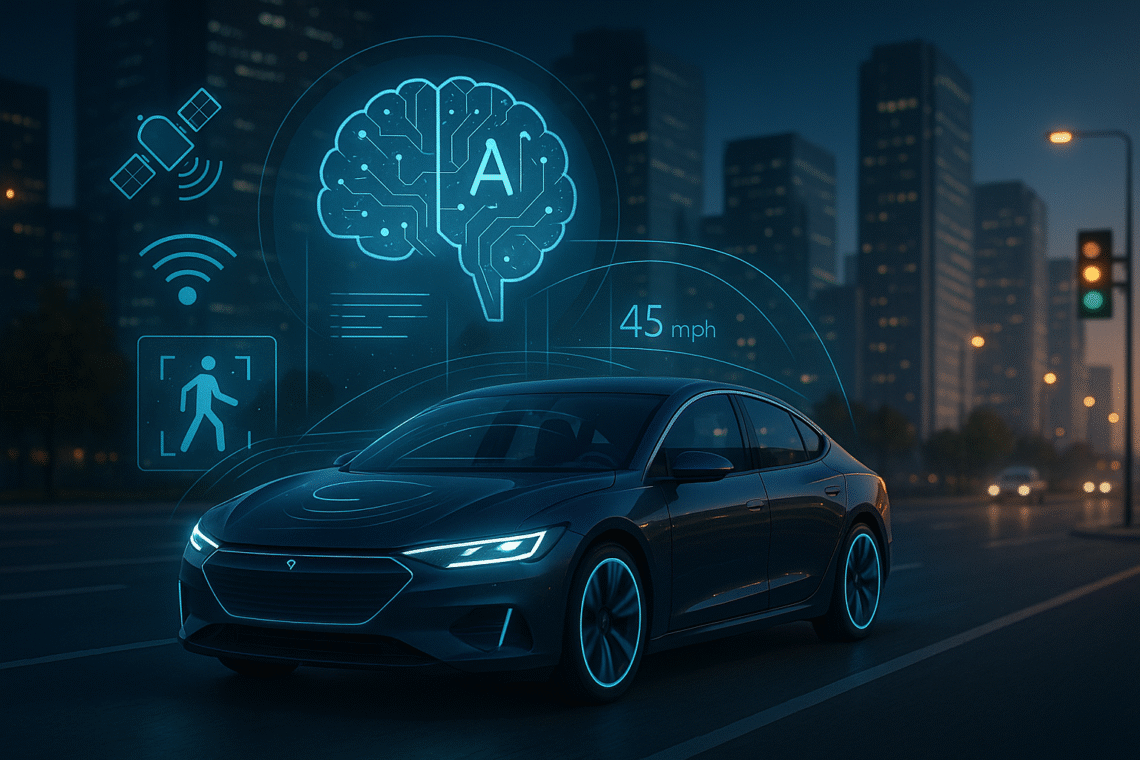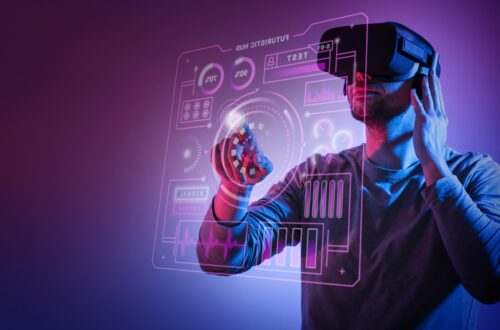A New Era of Intelligent Mobility
The automotive industry is undergoing the most profound transformation since the invention of the internal combustion engine. At the heart of this disruption is Artificial Intelligence (AI)—a technology once reserved for science fiction, now deeply embedded in the mechanics, systems, and soul of modern vehicles. From autonomous driving and predictive maintenance to smart manufacturing and personalized in-car experiences, AI is no longer the future—it’s the present.
1. From Hardware to Software: Cars Become Smart Devices
Traditionally, cars were feats of mechanical engineering. Today, they are fast becoming computers on wheels—equipped with sensors, chips, and neural networks that interpret data in real time. AI enables vehicles to:
-
Perceive the environment through cameras, LiDAR, radar, and ultrasonic sensors.
-
Make decisions based on real-time inputs—like lane changes, obstacle avoidance, or braking.
-
Learn over time, improving performance through machine learning and edge computing.
Companies like Tesla, NVIDIA, and Waymo are leading the charge, but legacy automakers such as BMW, Ford, and Toyota are rapidly integrating AI across their operations to stay competitive.
2. Autonomous Driving: A Road Less Traveled—But Approaching Fast
While full autonomy remains a work in progress, AI-powered driver-assistance systems (ADAS) are already widely available. Features like adaptive cruise control, automatic emergency braking, lane-keeping assist, and traffic jam autopilot are reshaping the driving experience.
AI doesn’t just drive—it interprets human behavior, weather conditions, and urban complexity, enabling vehicles to adapt to ever-changing road environments. The fusion of AI with 5G, V2X (vehicle-to-everything) communication, and advanced mapping will push us closer to Level 4 and Level 5 autonomy in the coming years.
3. Manufacturing Smarter: AI Behind the Scenes
The influence of AI is not limited to the road. In factories and R&D labs, AI is optimizing the entire production lifecycle:
-
Predictive maintenance of machinery minimizes downtime.
-
Computer vision enhances quality control by identifying micro-defects invisible to the human eye.
-
Digital twins simulate and optimize vehicle design, performance, and supply chain efficiency.
This fusion of AI and Industry 4.0 is helping manufacturers lower costs, improve sustainability, and boost agility in a volatile global market.
4. Personalized Experience: Your Car Knows You
Modern vehicles, powered by AI, are learning not just how to drive—but how to serve. From intelligent voice assistants and facial recognition ignition to personalized climate control, AI tailors every drive to the individual.
Imagine a vehicle that automatically adjusts your seat, loads your preferred route, syncs your calendar, and even plays the right playlist based on your mood—this is not a concept; it’s already being rolled out in premium models.
5. Data as Fuel: The Invisible Engine
Perhaps the most valuable resource in this transformation is not oil, but data. Every smart car on the road is a data center—collecting terabytes of information daily. AI turns this raw data into actionable insights:
-
Insurance companies use AI to assess driver behavior in real time.
-
Fleet managers optimize logistics based on AI predictions.
-
Urban planners leverage traffic and mobility data for smarter infrastructure.
Of course, with great data comes great responsibility. Cybersecurity, data privacy, and ethical AI usage are critical challenges automakers and regulators must navigate carefully.
6. The Road Ahead: Challenges and Opportunities
The integration of AI into the automotive industry isn’t without obstacles:
-
Regulatory uncertainty around autonomous vehicles and data governance.
-
Public trust and safety concerns.
-
High development costs and technological limitations in edge cases (e.g., extreme weather, unpredictable behavior).
Yet, the potential upside is staggering. According to McKinsey, AI could generate up to $400 billion annually in value for the auto industry by 2030. The companies that will lead the next decade are those that understand that AI is not just a feature—it’s the foundation.
Conclusion: AI Is Redefining What It Means to Drive
AI is not simply upgrading cars—it’s reimagining mobility itself. As intelligent systems become more pervasive, the automobile is being reborn—not just as a mode of transport, but as a connected, adaptive, and autonomous partner in our daily lives.
The future is not waiting at the horizon—it’s accelerating toward us, one intelligent vehicle at a time.
Visit our Website : VinesNest





